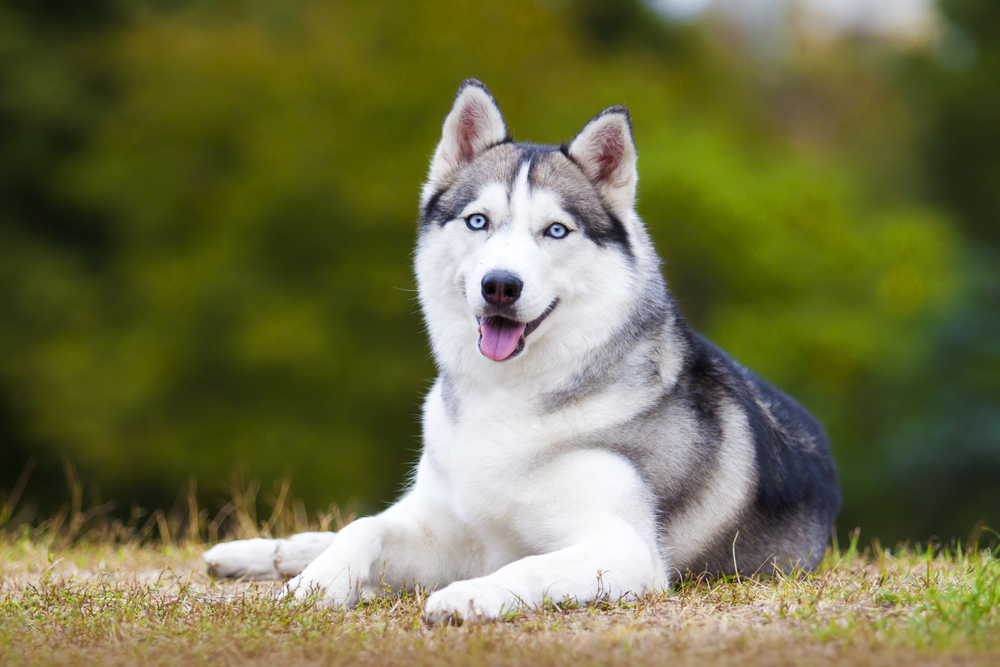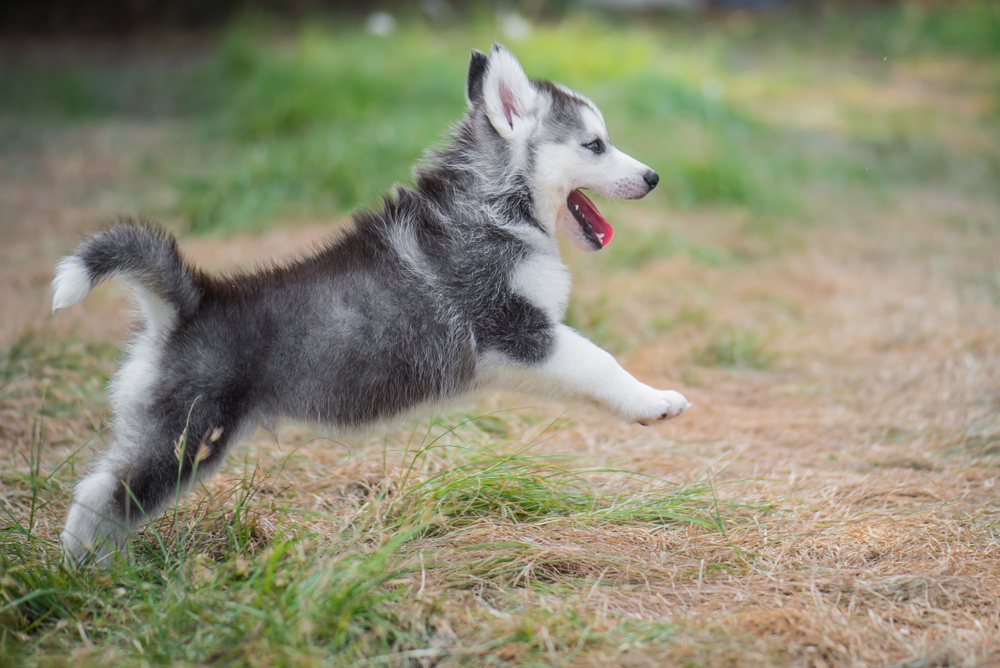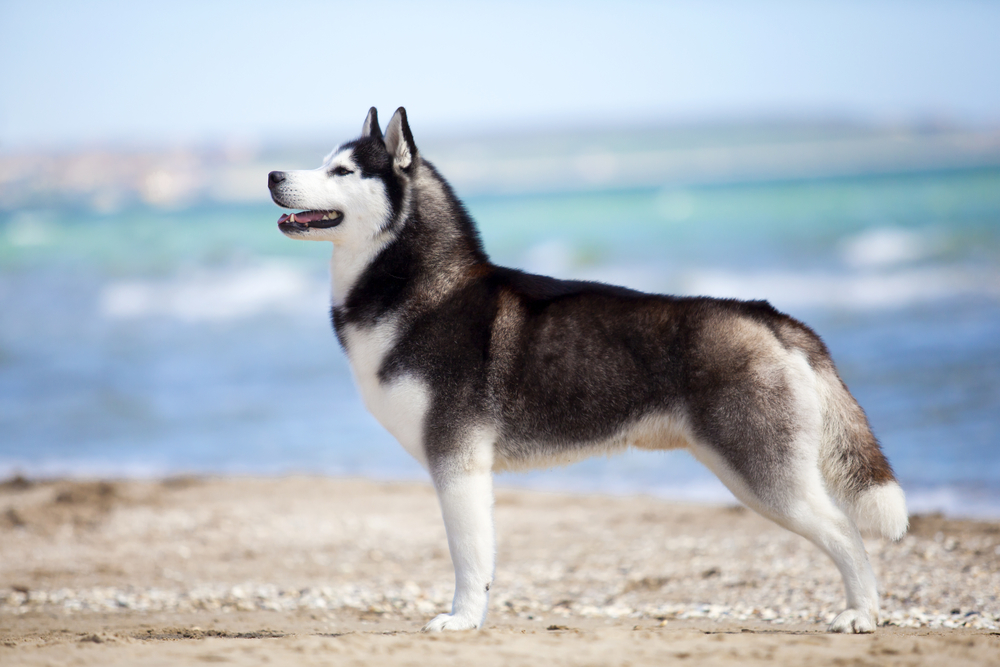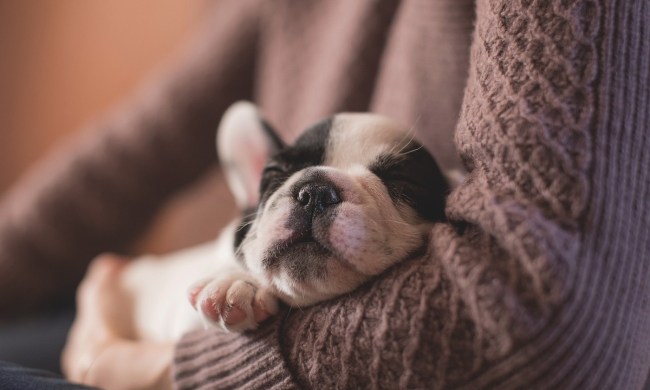
Huskies are known for being one of the most beautiful pups out there, but they should not be considered a beginner breed. Expert pet owners and husky aficionados alike often caution first-time dog owners against adopting this high-energy breed.
That being said, training a husky is doable if you know where to start and you stick with it. Consider this your guide to husky training for dummies. We’ll walk you through the ins and outs of the husky’s physical traits, temperament, and — most importantly — husky training tips.

Husky physical traits
Huskies are medium-sized members of the working group. Their average height is 20-22 inches for females and 21-23.5 inches for males. Females weigh around 35-50 pounds, while males are slightly heavier, 45-60 pounds.
Relative to their size, huskies have a fairly long life expectancy, roughly 12-14 years. Genetically, huskies are a member of the spitz family, making them well suited to frigid weather. If they have access to ample shade, a cooling fan, and plenty of water when it’s hot outside, huskies can thrive in any climate.

Husky personality traits
Friendly and good natured with people of all ages, huskies are a fantastic option for those who want affectionate, family-oriented dogs. They’re also ideal for anyone who lives an active, outdoorsy lifestyle. However, their sweetness extends to strangers and other dogs, so they’re not the best choice if you want your pup to serve as a guard dog.
Huskies require a minimum of 1 hour of exercise (and really more is better), but their high-energy demeanor isn’t limited to physical stimulation. Huskies are also prone to boredom. If they’re left alone all day without some form of stimulation, they can easily become destructive.
This breed makes for independent dogs, but sometimes to the point of stubbornness, however, they’re also intelligent. With patience, consistency, and a strong will to rival your dog’s, you’ll be able to train your husky in a few simple steps. Let’s find out how it’s done with these six husky training tips.
Step 1: Establish a hierarchy.
Bred to pull sleds in harsh arctic climates, huskies are pack animals by nature. It’s ingrained in them to follow the leader. However, leadership isn’t about aggression or domination.
Be firm when you give commands but don’t shout. Speak to your dog using a calm tone, and make sure you praise them when they obey your commands.
Step 2: Avoid punishing your pooch.
Punishing your dog when they misbehave seems like the right thing to do, but it can actually make things much worse. When you admonish your dog, you’re still rewarding them with something they want — your attention.
Instead, distract them from the behavior you want to correct (chewing your shoes, barking excessively) by clapping. The sound will get their attention, and then you can redirect their attention.
Step 3: Stick to positive reinforcement.
Training your husky depends on consistency and positive reinforcement. Start off with basic training commands like "sit" or "stay." It may take several repetitions, and you should reward your dog each time they complete the task.
Give them a treat, or be generous with praise and affection. Dogs have limited attention spans, so try to keep training sessions short and sweet. Around 10–15 minutes is ideal, especially for a young, hyper puppy.
Step 4: Consider crate training.
Leaving a husky unattended is a surefire way to come home to a mess, but the thought of crate training strikes many pet parents as cruel. However, as long as your dog’s crate is large enough to accommodate them comfortably, crate training gives your pup a sense of security (it makes him feel like he has his own den or cave).
Not only is crate training a great way to potty-train your dog, but it will also prevent them from getting into potentially dangerous situations while you’re away from home.
Step 5: Get your husky a martingale collar.
Unlike an old-fashioned choke collar, a martingale collar is comfortable for your dog to wear. These types of collars are also effective for training puppies, particularly during walks.
Please note that you should never leave your dog in their martingale collar, as it still presents a choking hazard when dogs aren’t being supervised.
Step 6: Stay consistent.
Dogs learn best from consistent, repetitive training, which means everyone in the family has to be on board. For example, if you don’t want your husky sleeping on the sofa, it won’t do any good for you to tell your pooch not to climb on the furniture if your spouse allows them to do it.

Are huskies easy to train?
There's no surefire answer to this question. The American Kennel Club lists Siberian Huskies as moderately easy to change — a three on a five-point scale. Huskies are energetic animals that bark a lot, which can present some challenges. Huskies also have high mental stimulation needs. Though that means they need dedicated pet parents, the need for high mental stimulation also means spending time practicing commands can be fulfilling and rewarding to a husky.
As with most breeds, huskies benefit from training at a young age. However, even an older dog can benefit from the structure and safety learning commands provides. Working with a cetrified professional trainer can help you and your husky succeed.
Huskies can be challenging to train. They’re also gentle, playful, and relentlessly good natured. If you’re willing to put in the time and effort, you’ll be able to train your husky to obey your commands. Start off with basic commands, be consistent, use positive reinforcement, and you’ll be able to focus on your dog’s friendly temperament instead of their stubbornness.



